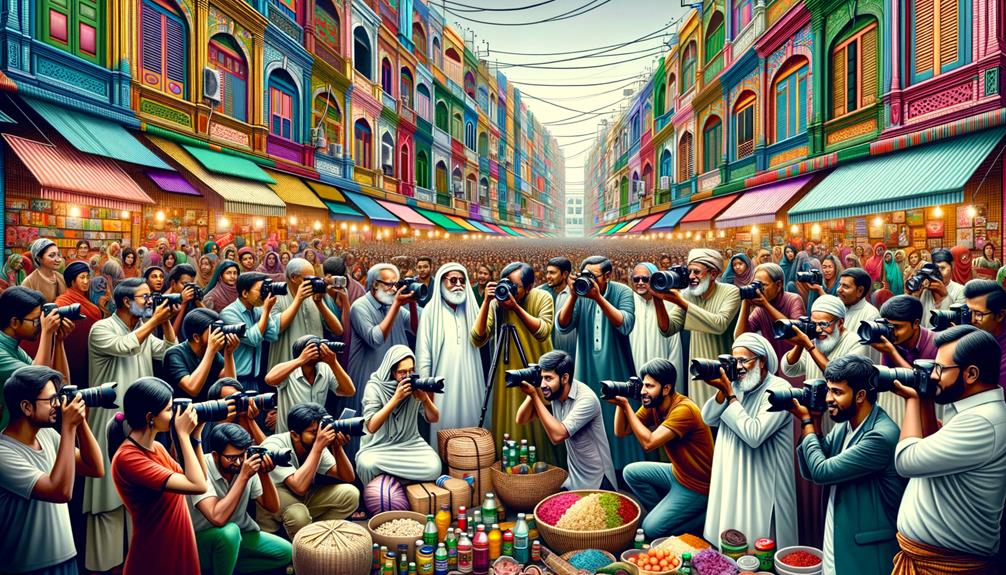Kishoreganj, a district in Bangladesh, holds within its borders a myriad of historical treasures and enchanting tales that weave together the vibrant tapestry of its past. Steeped in rich heritage, this district's administration, under the leadership of Deputy Commissioner Md Sarwar Murshed Chowdhury, diligently works to preserve and promote the district's cultural legacy. With a population that has seen steady growth, Kishoreganj is a melting pot of diverse religious affiliations, each contributing to the district's unique charm. As we explore the historical sites and landmarks, immerse ourselves in the folklore and traditions, and discover the resting places of revered religious leaders, we begin to unravel the captivating stories that have been passed down through generations. Join us on this journey as we uncover the hidden gems of Kishoreganj, where history and enchantment intertwine.
Administration and District Officials
Kishoreganj district, known for its rich historical treasures and enchanting tales, is governed by a dedicated team of district officials and administrators. The administrative structure of the district is designed to ensure effective district governance and the smooth functioning of various administrative tasks. At the helm of the district administration is the Deputy Commissioner, Md Sarwar Murshed Chowdhury, who oversees the overall administration of the district. Assisting the Deputy Commissioner are several Additional Deputy Commissioners, each responsible for specific areas such as taxation, education, information and communication technology, and overall administration. This administrative team plays a crucial role in managing the district's affairs, coordinating different departments, and implementing government policies and programs. Their collective efforts contribute to the efficient functioning of Kishoreganj district and the well-being of its residents.
Subdistricts/Upazilas and Population
Continuing our exploration of Kishoreganj's administrative structure and historical significance, we now turn our attention to the subdistricts/upazilas within the district and the population they encompass. Kishoreganj district is divided into 12 upazilas, namely Katiadi, Karimganj, Kishoreganj Sadar, Hossainpur, Tarail, Pakundia, Bajitpur, Austagram, Mithamain, Nikli, Itna, and Bhairab. These upazilas collectively house a population of over 3 million people. Over the years, the district has experienced significant population growth, with an increase from 1,576,504 in 1974 to 1,895,153 in 1981. This growth can be attributed to various factors such as improved healthcare facilities, better living conditions, and increased economic opportunities. The diverse population of Kishoreganj contributes to the vibrant cultural heritage and enchanting tales that the district is known for.
Religious Composition
The religious composition of Kishoreganj district reflects a predominantly Muslim population, with Muslims comprising 94.51% of the total residents, followed by Hindus at 5.44%, and a small percentage categorized as 'Other' or not stated at 0.05%. This religious diversity in Kishoreganj contributes to the cultural heritage of the district, as it encompasses a range of religious practices, festivals, and traditions. The coexistence of Muslims and Hindus in Kishoreganj fosters an environment of tolerance and mutual respect, where people from different religious backgrounds live harmoniously together. The district is home to numerous mosques, temples, and religious sites that hold significance for both communities. These religious landmarks not only serve as places of worship but also act as symbols of the rich cultural tapestry of Kishoreganj.
Historical Sites and Landmarks
With a rich tapestry of historical sites and landmarks, Kishoreganj district in Bangladesh unveils captivating tales of its past. One of the notable historical sites is the Jangalbari Fort, located in Jangalbari village of Karimganj Upazila. It was once a strong outpost of Bengal Ruler Isa Khan but suffered severe damage during the great earthquake in 1897. Another significant site is Egarosindur, a village situated on the east side of the river Brahmaputra. Historians debate its history, but artifacts dating back to the 10th century BC have been discovered, showcasing its importance as a center of trade and commerce. In addition to these landmarks, the district is also home to the Sadi Mosque, a beautiful single-domed square mosque built in 1652 AD, and the Fort of Isha Khan, which holds valuable antiques. These historical sites and artifacts provide a glimpse into Kishoreganj's rich heritage and cultural significance.
| Historical Sites | Location | Significance |
|---|---|---|
| Jangalbari Fort | Jangalbari village, Karimganj Upazila | Outpost of Isa Khan, damaged in 1897 earthquake |
| Egarosindur | East side of the river Brahmaputra | Archaeological artifacts from the 10th century BC, center of trade and commerce |
| Sadi Mosque | Kishoreganj | Built in 1652 AD, beautiful architecture |
Mazars (Graveyards) of Religious Leaders
Situated in the district of Kishoreganj, the Mazars (Graveyards) of Religious Leaders hold profound significance as sacred resting places for revered spiritual figures. These mazars not only serve as burial sites but also play a crucial role in preserving the rich cultural heritage of the region.
Discussion ideas:
- Preservation efforts: The local community takes great pride in maintaining and preserving these mazars. Regular cleaning, repair work, and landscaping are undertaken to ensure their longevity. Efforts are made to protect the structures from natural decay and vandalism.
- Impact on local culture: The mazars serve as important cultural landmarks and pilgrimage sites. They attract devotees from far and wide, fostering a sense of unity and spirituality among the locals. The rituals and traditions associated with these mazars have become an integral part of the local culture, passing down from generation to generation. They contribute to the social fabric of the community, promoting religious harmony and a sense of identity.
Folklore and Traditional Tales
Immersed in the rich tapestry of Kishoreganj's history and culture are a plethora of captivating folklore and traditional tales that have been passed down through generations. One of the most significant events in the folklore of Kishoreganj is the Samsuddin Bokhari fair. Situated at Kurikhai, Katiadi, Kishoreganj, the Mazar of Samsuddin Bokhari is a pilgrimage site for many. Samsuddin Bokhari was a tour companion of Shahjalal, and the fair is held every year to mark his death anniversary. This fair starts from the second last Monday of the Magh month of Bangla year and continues till the following Monday. Additionally, the Jangalbari Fort is shrouded in legends and tales. Once a strong outpost of Bengal Ruler Isa Khan, the fort was severely damaged by the great earthquake in 1897. These folklore and traditional tales add depth and enchantment to the cultural heritage of Kishoreganj.
Frequently Asked Questions
Who Is the Current Deputy Commissioner of Kishoreganj?
The current deputy commissioner of Kishoreganj is Md Sarwar Murshed Chowdhury. In terms of population growth, between 1974 and 1981, the district experienced an increase from 1,576,504 to 1,895,153 individuals. This reflects a positive growth rate during that period. It is important to note that while discussing the current deputy commissioner and population growth, we should not overlook the historical treasures and enchanting tales that Kishoreganj holds, adding to its cultural richness and significance.
What Is the Population Growth Rate of Kishoreganj Between 1974 and 1981?
The population growth rate of Kishoreganj between 1974 and 1981 was not mentioned in the provided information. However, analyzing population dynamics and factors influencing population growth can help understand the changes. Factors such as birth rate, death rate, migration, and government policies can all contribute to population growth. Studying these factors would provide a comprehensive understanding of the population growth rate during the mentioned period.
What Is the Percentage of Hindus in the Religious Composition of Kishoreganj?
The religious composition of Kishoreganj includes a diverse community, with Hindus comprising approximately 5.44% of the population. This percentage highlights the religious diversity present in the region. The presence of Hindu festivals in Kishoreganj also contributes to the local economy, as these celebrations attract visitors from both within and outside the district. The cultural and economic impact of these festivals further enhances the vibrant and inclusive nature of Kishoreganj.
How Was Jangalbari Fort Damaged?
The Jangalbari Fort in Kishoreganj was severely damaged by a great earthquake in 1897. The fort, located in Jangalbari village of Karimganj Upazila, was a strong outpost of Bengal Ruler Isa Khan. Despite the damage, the fort holds significant historical value. Efforts have been made for the renovation and preservation of the Jangalbari Fort, highlighting its importance as a historical treasure in Kishoreganj.
Where Is the Mazar of Samsuddin Bokhari Located?
Samsuddin Bokhari's mazar is located in Kishoreganj, Bangladesh. Situated at Kurikhai, Katiadi, Kishoreganj, the mazar is a significant religious site. Samsuddin Bokhari was a tour companion of Shahjalal, and his mazar attracts devotees and pilgrims every year. The annual fair held to commemorate his death anniversary is a notable event in the region. The mazar holds cultural and religious importance, and its location in Kishoreganj further enhances the historical and spiritual significance of the area.





